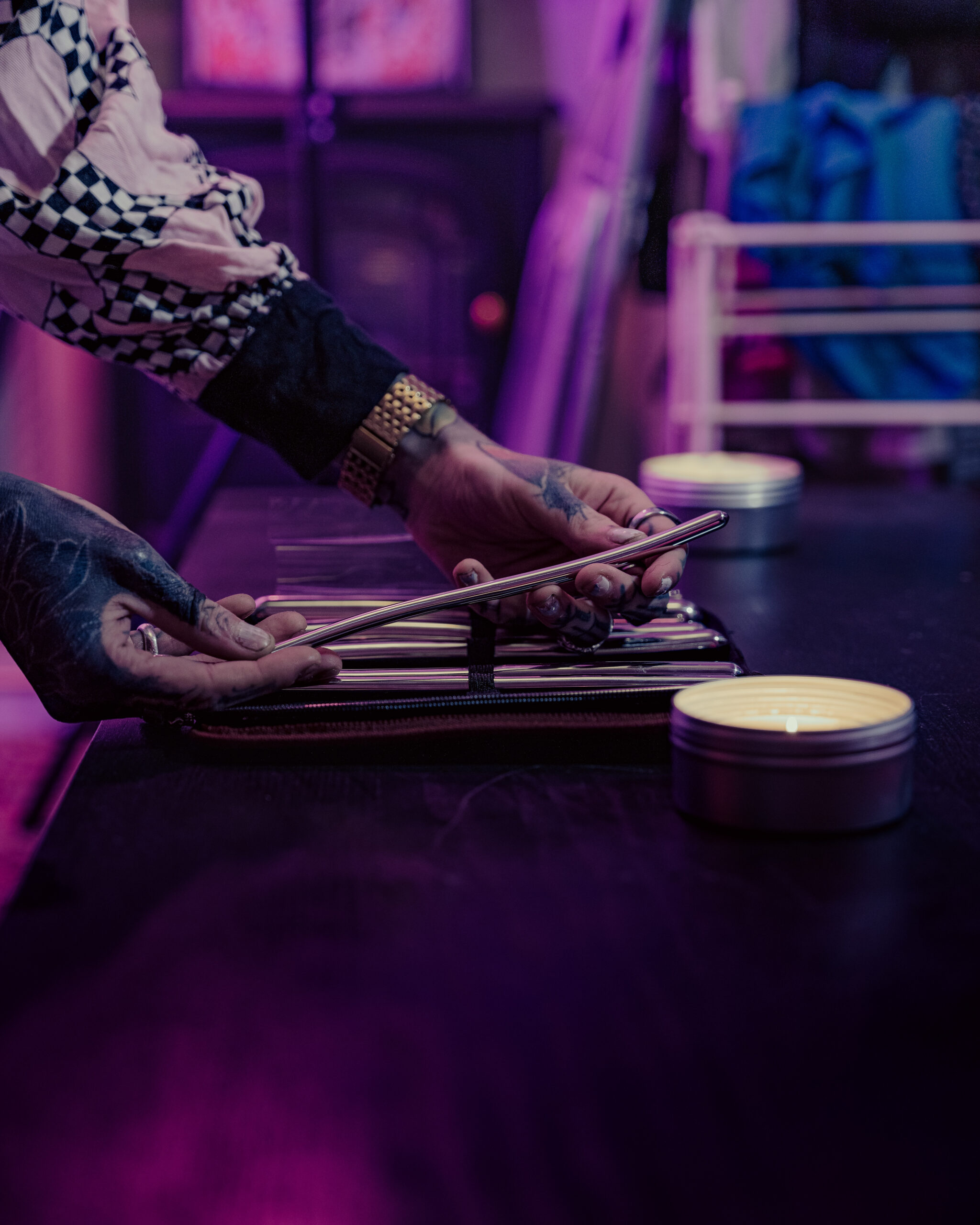Exploring The Demigender Identity And Its Role In Modern Dating

Understanding Demigender Identity
Demigender identity, a nuanced experience that exists on the spectrum of gender identity, is increasingly recognized within modern society. Individuals identifying as demigender may partially identify with one gender while also experiencing a disconnect from it or identifying with another gender to a lesser degree. Understanding this unique perspective is crucial for fostering inclusive and accepting dating environments where individuals can authentically express themselves.
Defining Demigender
Demigender identity, a nuanced experience that exists on the spectrum of gender identity, is increasingly recognized within modern society. Individuals identifying as demigender may partially identify with one gender while also experiencing a disconnect from it or identifying with another gender to a lesser degree. Understanding this unique perspective is crucial for fostering inclusive and accepting dating environments where individuals can authentically express themselves.
Here are some key points to understand about demigender identity in the context of modern dating:
- Demigender people may use different pronouns depending on their comfort level and how they identify at a given time. It’s important to ask respectfully what pronouns someone uses and to honor their preferences.
- Dating as a demigender person can involve navigating societal expectations and assumptions about gender roles. Open communication and understanding are essential for building healthy relationships.
- It’s crucial for dating partners to be respectful of each other’s identities, even if they don’t fully understand them. Creating a safe space for open dialogue and learning is essential.
Characteristics of Demigender Individuals
Demigender individuals may express their gender identity in diverse ways. Some may identify strongly with one gender while partially identifying with another, creating a fluid and dynamic sense of self. Others might experience their gender as fluctuating throughout the day or over time.
Understanding these nuances is key to fostering respectful and inclusive relationships. Demigender individuals deserve to be treated with dignity and respect, just like anyone else.
Experiences and Challenges
Demigender identity, a nuanced experience on the gender identity spectrum, is increasingly recognized in modern society. Individuals who identify as demigender may partially identify with one gender while also experiencing a disconnect from it or identifying with another gender to a lesser degree. Understanding this unique perspective is crucial for fostering inclusive and accepting dating environments.
Demigender people may use different pronouns depending on their comfort level and how they identify at a given time. It’s important to ask respectfully what pronouns someone uses and to honor their preferences.
Dating as a demigender person can involve navigating societal expectations and assumptions about gender roles. Open communication and understanding are essential for building healthy relationships.
It’s crucial for dating partners to be respectful of each other’s identities, even if they don’t fully understand them. Creating a safe space for open dialogue and learning is essential.
Demigender individuals may express their gender identity in diverse ways. Some may identify strongly with one gender while partially identifying with another, creating a fluid and dynamic sense of self. Others might experience their gender as fluctuating throughout the day or over time. Understanding these nuances is key to fostering respectful and inclusive relationships. Demigender individuals deserve to be treated with dignity and respect, just like anyone else.
Demigender in Dating
Demigender identity, a nuanced experience on the gender identity spectrum, is increasingly recognized in modern society. Individuals who identify as demigender may partially identify with one gender while also experiencing a disconnect from it or identifying with another gender to a lesser degree. Understanding this unique perspective is crucial for fostering inclusive and accepting dating environments.
Demigender people may use different pronouns depending on their comfort level and how they identify at a given time. It’s important to ask respectfully what pronouns someone uses and to honor their preferences.
Dating as a demigender person can involve navigating societal expectations and assumptions about gender roles. Open communication and understanding are essential for building healthy relationships.
It’s crucial for dating partners to be respectful of each other’s identities, even if they don’t fully understand them. Creating a safe space for open dialogue and learning is essential.
Demigender individuals may express their gender identity in diverse ways. Some may identify strongly with one gender while partially identifying with another, creating a fluid and dynamic sense of self. Others might experience their gender as fluctuating throughout the day or over time. Understanding these nuances is key to fostering respectful and inclusive relationships. Demigender individuals deserve to be treated with dignity and respect, just like anyone else.
Navigating Attraction and Labels
Demigender identity, a nuanced experience on the gender identity spectrum, is increasingly recognized in modern society. Individuals who identify as demigender may partially identify with one gender while also experiencing a disconnect from it or identifying with another gender to a lesser degree. Understanding this unique perspective is crucial for fostering inclusive and accepting dating environments.
Demigender people may use different pronouns depending on their comfort level and how they identify at a given time. It’s important to ask respectfully what pronouns someone uses and to honor their preferences.
Dating as a demigender person can involve navigating societal expectations and assumptions about gender roles. Open communication and understanding are essential for building healthy relationships.
It’s crucial for dating partners to be respectful of each other’s identities, even if they don’t fully understand them. Creating a safe space for open dialogue and learning is essential.
Demigender individuals may express their gender identity in diverse ways. Some may identify strongly with one gender while partially identifying with another, creating a fluid and dynamic sense of self. Others might experience their gender as fluctuating throughout the day or over time. Understanding these nuances is key to fostering respectful and inclusive relationships. Demigender individuals deserve to be treated with dignity and respect, just like anyone else.
Communication and Disclosure
Demigender identity, a nuanced experience on the gender identity spectrum, is increasingly recognized in modern society. Individuals who identify as demigender may partially identify with one gender while also experiencing a disconnect from it or identifying with another gender to a lesser degree. Understanding this unique perspective is crucial for fostering inclusive and accepting dating environments.
Demigender people may use different pronouns depending on their comfort level and how they identify at a given time. It’s important to ask respectfully what pronouns someone uses and to honor their preferences.
Dating as a demigender person can involve navigating societal expectations and assumptions about gender roles. Open communication and understanding are essential for building healthy relationships.
It’s crucial for dating partners to be respectful of each other’s identities, even if they don’t fully understand them. Creating a safe space for open dialogue and learning is essential.
Demigender individuals may express their gender identity in diverse ways. Some may identify strongly with one gender while partially identifying with another, creating a fluid and dynamic sense of self. Others might experience their gender as fluctuating throughout the day or over time. Understanding these nuances is key to fostering respectful and inclusive relationships. Demigender individuals deserve to be treated with dignity and respect, just like anyone else.

Finding Compatibility and Support
Demigender identity, a nuanced experience on the gender identity spectrum, is increasingly recognized in modern society. Individuals who identify as demigender may partially identify with one gender while also experiencing a disconnect from it or identifying with another gender to a lesser degree. Understanding this unique perspective is crucial for fostering inclusive and accepting dating environments.
Demigender people may use different pronouns depending on their comfort level and how they identify at a given time. It’s important to ask respectfully what pronouns someone uses and to honor their preferences. Dating as a demigender person can involve navigating societal expectations and assumptions about gender roles. Open communication and understanding are essential for building healthy relationships.
It’s crucial for dating partners to be respectful of each other’s identities, even if they don’t fully understand them. Creating a safe space for open dialogue and learning is essential. Demigender individuals may express their gender identity in diverse ways. Some may identify strongly with one gender while partially identifying with another, creating a fluid and dynamic sense of self. Others might experience their gender as fluctuating throughout the day or over time. Understanding these nuances is key to fostering respectful and inclusive relationships. Demigender individuals deserve to be treated with dignity and respect, just like anyone else.
Challenges and Considerations
Exploring demigender identity in the context of modern dating brings forth unique challenges and considerations. Understanding the fluidity and complexity of demigender experiences is crucial for creating inclusive and supportive dating environments.
Societal Perceptions and Misconceptions
Demigender individuals may face societal perceptions and misconceptions that stem from a lack of understanding about gender identities beyond the binary. Some common misconceptions include assuming that demigender people are simply “confused” about their gender or that they will inevitably transition to another gender.
These misconceptions can lead to judgment, prejudice, and difficulty finding acceptance in dating.

It’s important to challenge these stereotypes and promote accurate information about demigender identities. Education and open dialogue are essential for creating a more inclusive and understanding society where demigender individuals feel comfortable expressing themselves authentically in their romantic relationships.
Mental Health and Well-being
Dating as a demigender person can present unique challenges related to mental health and well-being. Societal pressures and expectations surrounding gender roles can create stress and anxiety, especially when navigating romantic relationships that may not fully understand or accept their identity.
The constant need to explain and educate about demigender identity can be emotionally draining. It’s important for demigender individuals to prioritize self-care and build supportive networks of friends, family, or support groups who offer understanding and validation.
Additionally, experiencing prejudice or discrimination in dating can have a significant impact on mental health. Feeling rejected or invalidated based on gender identity can lead to feelings of isolation, depression, or low self-esteem.
Creating safe and inclusive spaces where demigender individuals feel comfortable expressing themselves without fear of judgment is crucial for fostering positive mental health outcomes in dating experiences.
Advocacy and Awareness
One of the biggest challenges faced by demigender individuals in dating is navigating societal misconceptions and expectations. erotic vibrating eggs Many people lack understanding about gender identities beyond the binary, leading to assumptions and judgments. Demigender folks may encounter prejudice, be misgendered, or have their experiences invalidated.
Advocating for greater awareness and acceptance of demigender identities is crucial. This involves educating others about what it means to be demigender, challenging stereotypes, and promoting inclusivity in dating spaces. Encouraging open and honest conversations about gender identity can help break down barriers and foster understanding.
Creating inclusive dating environments requires a conscious effort from individuals and platforms alike. Dating apps and websites can play a role by offering options for demigender identities and ensuring their algorithms don’t perpetuate biases.
Resources and Support
Understanding the complexities of demigender identity is crucial for fostering inclusive dating environments. Resources such as online communities, support groups, and educational materials can provide valuable information and support to both demigender individuals and those who want to learn more.
Organizations and Communities
There are numerous organizations and online communities dedicated to supporting individuals who identify as demigender and their allies. These resources offer a sense of belonging, understanding, and access to information about gender identity, relationships, and navigating societal expectations.
Some notable organizations include:
- GLAAD works to promote LGBTQ+ acceptance through media advocacy.
- The Trevor Project provides crisis intervention and suicide prevention services to LGBTQ+ youth.
- Human Rights Campaign (HRC) advocates for LGBTQ+ equality through policy change and public education.
In addition to these national organizations, there are many local and online support groups specifically for demigender individuals. Connecting with others who share similar experiences can provide invaluable emotional support and practical advice.
Therapy and Counseling
Navigating dating as a demigender person can be challenging, but resources and support are available to help create a more inclusive and accepting experience.
For those struggling with their identity or seeking understanding, therapy and counseling can provide a safe space to explore feelings, gain self-awareness, and develop coping mechanisms for dealing with societal pressures. A therapist experienced in gender identity issues can offer guidance and support throughout this journey.
Support groups can also be immensely helpful, connecting individuals with others who understand their experiences and providing a sense of community and belonging. Online forums and social media communities dedicated to demigender identities can offer valuable information, shared experiences, and emotional support.
Online Platforms and Forums

Demigender people may face unique challenges when navigating the world of dating due to societal misconceptions surrounding gender identity.
Online platforms and forums dedicated to LGBTQ+ communities and specifically those focused on demigender experiences can be invaluable resources for finding support, connecting with like-minded individuals, and accessing information about dating as a demigender person. These spaces offer a sense of community and understanding, allowing individuals to share their experiences, ask questions, and learn from others who are going through similar journeys.
Organizations such as GLAAD, The Trevor Project, and the Human Rights Campaign provide resources and support for LGBTQ+ individuals, including those who identify as demigender. Their websites offer educational materials, advocacy updates, and contact information for local support services.
sideways sex
Uncover all facts in the article
Catch up on the full content























